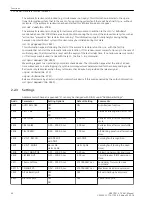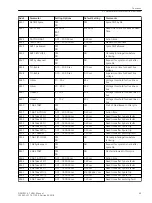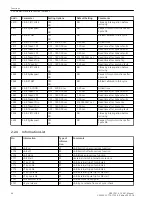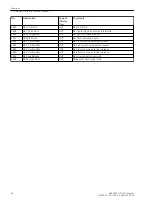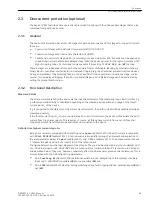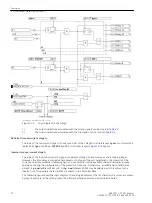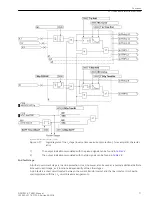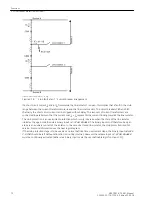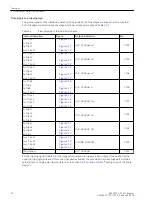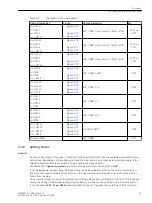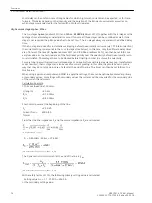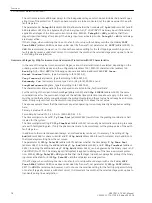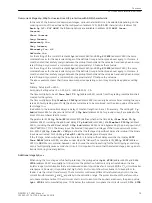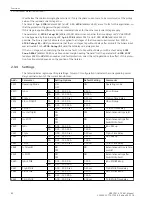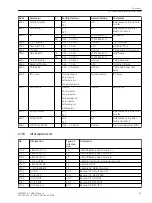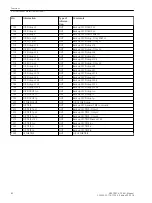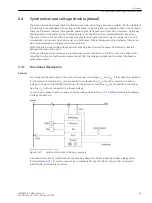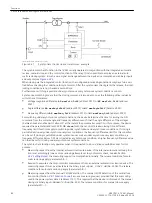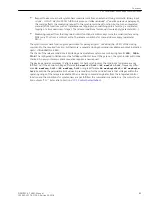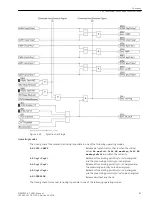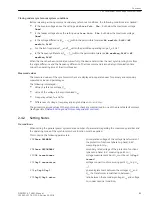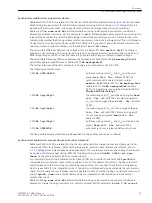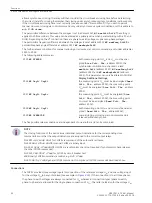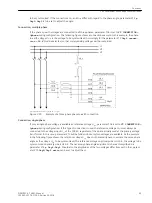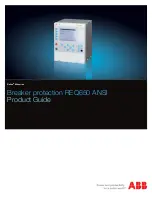
The set times are mere additional delays for the independent stages, which do not include the inherent oper-
ating time of the protection. If only the phase currents are to be monitored, set the pickup value of the earth
fault stage to ∞.
The parameter
I> Telep/BI
(address 2624) defines whether the time delays
T Iph>
(address 2621) and
T
3I0>
(address 2623) can be bypassed by the binary input
>O/C InstTRIP
. The binary input (if allocated) is
applied to all stages of the time-overcurrent protection. With
I> Telep/BI
=
YES
you define that the
Ι
>
stages trip without delay after pickup if the binary input was activated. For
I> Telep/BI
=
NO
the set delays
are always active.
If the
Ι
> stage, when switching the line onto a fault, is to retrip without delay or with a short delay
SOTF
Time DELAY
(address 2680, see above under side title “General”), set parameter
I> SOTF
(address 2625) to
YES
. We recommend, however, not to choose the sensitive setting for the fast tripping as switching onto a
fault typically causes a solid short circuit. It is important to avoid that the selected stage picks up due to transi-
ents during line energization.
Overcurrent Stages
Ι
p, 3
Ι
0p for Inverse-time Overcurrent Protection with IEC Characteristics
In the case of the inverse time overcurrent stages, various characteristics can be selected, depending on the
ordering version of the device and the configuration (address 126). With IEC characteristics (address 126
Back-Up O/C
=
TOC IEC
) the following options are available in address 2660
IEC Curve
:
Normal Inverse
(inverse, type A according to IEC 60255-3),
Very Inverse
(very inverse, type B according to IEC 60255-3),
Extremely Inv.
(extremely inverse, type C according to IEC 60255-3) and
LongTimeInverse
(longtime, type B according to IEC 60255-3).
The characteristics and equations they are based on are listed in the „Technical Data“.
For the setting of the current thresholds
Ip>
(address 2640) and
3I0p PICKUP
(address 2650) the same
considerations as for the overcurrent stages of the definite time protection (see above) apply. In this case, it
must be noted that a safety margin between the pickup threshold and the set value has already been incorpo-
rated. Pickup only occurs at a current which is approximately 10 % above the set value.
The above example shows that the maximum expected operating current may directly be applied as setting
here.
Primary: Set value
Ι
P = 630 A,
Secondary: Set value
Ι
P = 5.25 A, d.h. (630 A/600 A) · 5 A.
The time multiplier to be set
T Ip Time Dial
(address 2642) results from the grading coordination chart
created for the system.
The time multiplier setting
T 3I0p TimeDial
(address 2652) can usually be set smaller according to a sepa-
rate earth fault grading plan. If only the phase currents are to be monitored, set the pickup value of the earth
fault stage to ∞.
In addition to the current-dependent delays, a time fixed delay can be set, if necessary. The settings
T Ip
Add
(address 2646 for phase currents) and
T 3I0p Add
(address 2656 for earth currents) are in addition to
the time delays resulting from the set curves.
The parameter
I(3I0)p Tele/BI
(address 2670) defines whether the time delays
T Ip Time Dial
(address 2642), including the additional delay
T Ip Add
(address 2646), and
T 3I0p TimeDial
(address
2652), including the additional delay
T 3I0p Add
(address 2656), can be bypassed by the binary input
>O/C
InstTRIP
(No. 7110). The binary input (if allocated) is applied to all stages of the time-overcurrent protec-
tion. With
I(3I0)p Tele/BI
=
YES
you define that the IP stages trip without delay after pickup if the binary
input was activated. For
I(3I0)p Tele/BI
=
NO
the set delays are always active.
If the
Ι
P stage, when switching the line onto a fault, is to retrip without delay or with a short delay
SOTF
Time DELAY
(address 2680, see above under side title “General”), set parameter
I(3I0)p SOTF
(address
2671) to
YES
. We recommend, however, not to choose the sensitive setting for the fast tripping as switching
onto a fault typically causes a solid short circuit. It is important to avoid that the selected stage picks up due to
transients during line energization.
Functions
2.3 Overcurrent protection (optional)
78
SIPROTEC 4, 7VK61, Manual
C53000-G1176-C159-5, Edition 05.2018
Summary of Contents for SIPROTEC 4 7VK61
Page 8: ...8 SIPROTEC 4 7VK61 Manual C53000 G1176 C159 5 Edition 05 2018 ...
Page 10: ...10 SIPROTEC 4 7VK61 Manual C53000 G1176 C159 5 Edition 05 2018 ...
Page 16: ...16 SIPROTEC 4 7VK61 Manual C53000 G1176 C159 5 Edition 05 2018 ...
Page 176: ...176 SIPROTEC 4 7VK61 Manual C53000 G1176 C159 5 Edition 05 2018 ...
Page 224: ...224 SIPROTEC 4 7VK61 Manual C53000 G1176 C159 5 Edition 05 2018 ...
Page 264: ...264 SIPROTEC 4 7VK61 Manual C53000 G1176 C159 5 Edition 05 2018 ...
Page 270: ...270 SIPROTEC 4 7VK61 Manual C53000 G1176 C159 5 Edition 05 2018 ...
Page 276: ...276 SIPROTEC 4 7VK61 Manual C53000 G1176 C159 5 Edition 05 2018 ...
Page 346: ...346 SIPROTEC 4 7VK61 Manual C53000 G1176 C159 5 Edition 05 2018 ...

